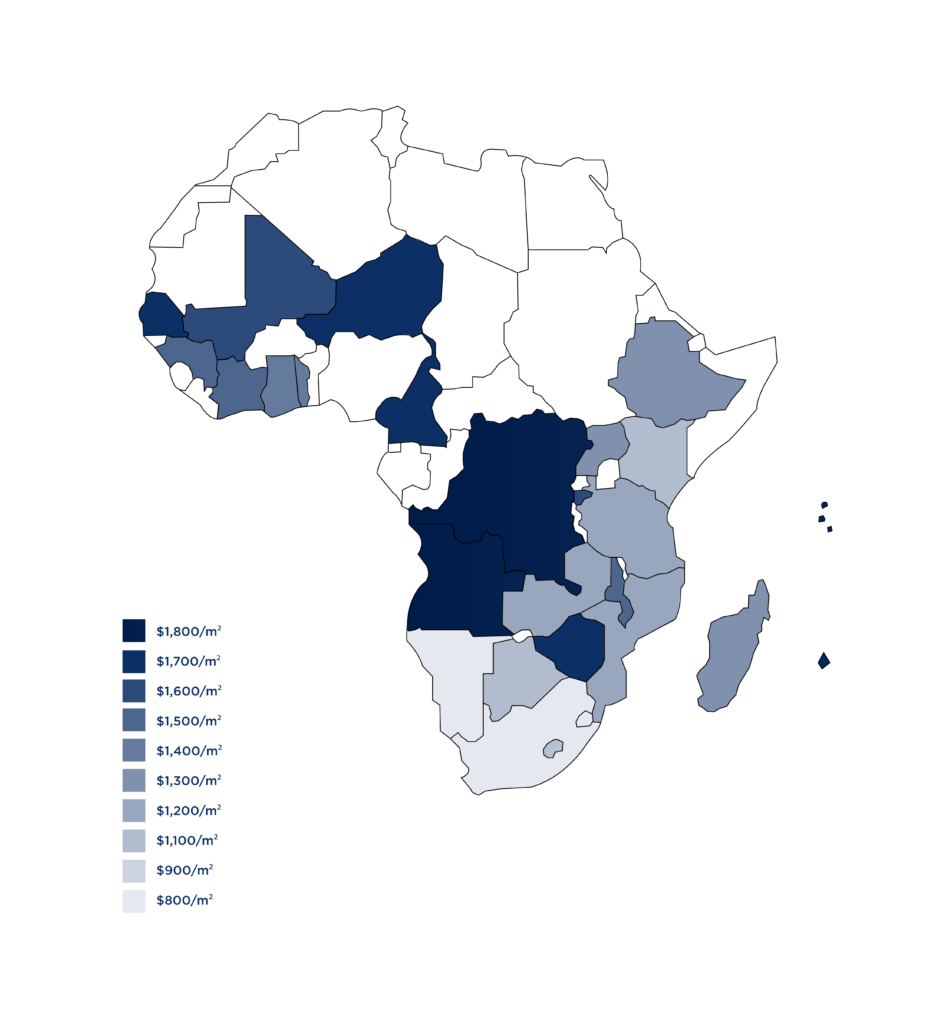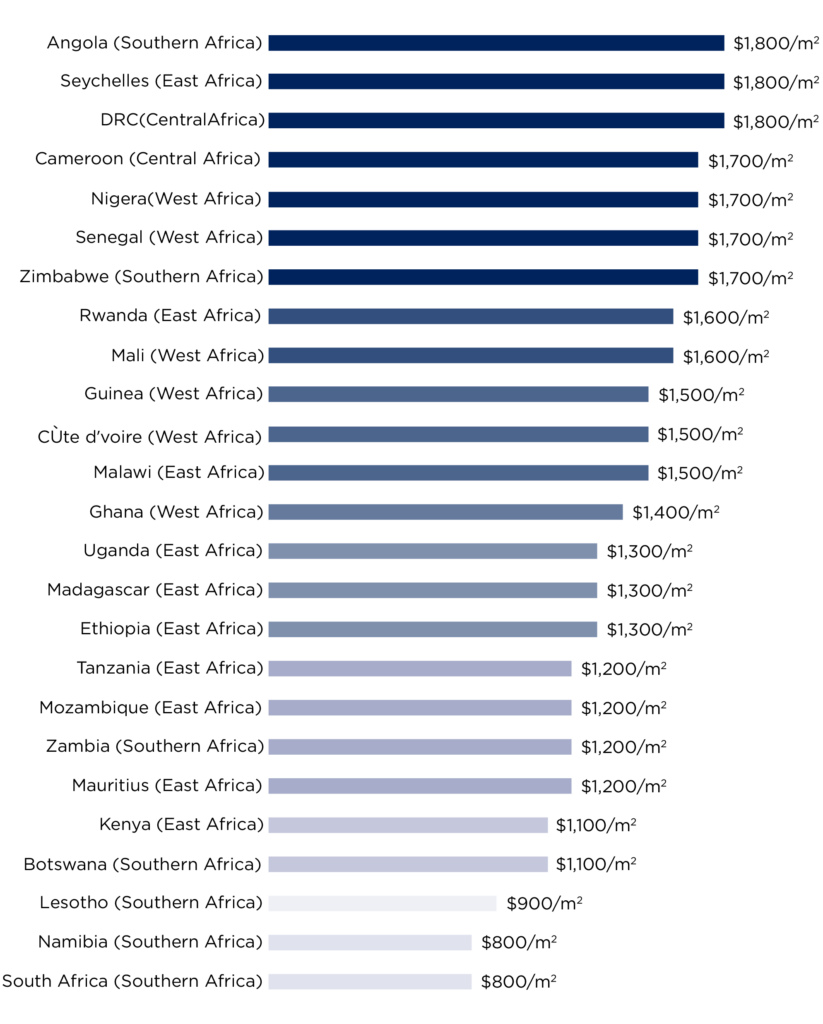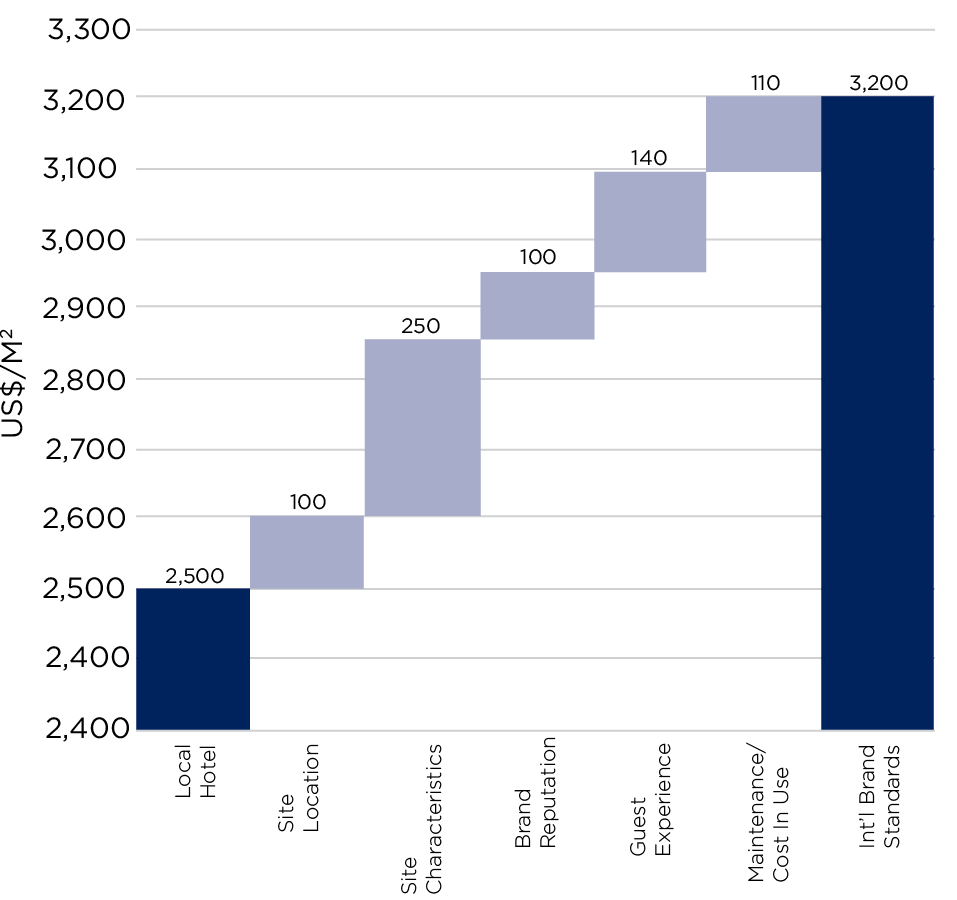Africa is a continent with 54 different countries divided into 5 regions, namely: North Africa, East Africa, Central Africa and Southern Africa, with an approximate population of 1.37 billion.
This section gives an insight into the varying construction costs of the different countries, key cost-influencing factors and items for consideration when investing in and/or comparing to the local market in Africa.

| North Africa | East Africa | Southern Africa | West Africa | Central Africa |
|---|---|---|---|---|
| Algeria | Burundi | Angola | Benin | Cameroon |
| Egypt | Comoros | Botswana | Burkina Faso | Central African Republic Chad |
| Libya | Djibouti | Lesotho | Cape Verde | Democratic Republic of the Congo |
| Morocco | Ethiopia | Namibia | Côte d'Ivoire | Equatorial Guinea |
| Sudan | Eritrea | South Africa | Gambia | Gabon |
| Tunisia | Kenya | Eswatini | Ghana | Republic of the Congo |
| South Sudan | Madagascar | Zambia | Guinea | Sao Tome and Principe |
| Malawi | Zimbabwe | Guinea Bissau | ||
| Mauritius | Liberia | |||
| Mozambique | Mali | |||
| Rwanda | Mauritania | |||
| Seychelles | Niger | |||
| Somalia | Nigeria | |||
| Tanzania | Senegal | |||
| Uganda | Sierra Leone | |||
| Togo |
Construction Costs In Africa
The table below is a summarised comparison of the varying approximate estimated construction costs in Africa for a prestige high-rise office tower (for ease of comparison) built according to international building standards. Rates are based on 1 January 2022 costs.
Rates include the cost of appropriate building services, but exclude the costs of site infrastructure development, parking, tenant fit-out and equipment, any future cost escalation, loss of interest, professional fees, land, value added tax, etc.

As per the table, the most expensive country to build in (from the data we have) is Angola, which is around 225% more expensive than the cheapest country, South Africa.
Ignoring the outliers, the following average costs can be seen in the different African regions (from the data we have):
- Southern Africa: $ 900/m²
- East Africa: $ 1,200/m²
- West Africa: $1,600/m²
- Central Africa: $1,800/m²
Key Cost Influencing Factors
Some of the key cost-influencing factors in the majority of African countries, depending on the site location, etc. that need to be considered by potential investors are summarised below:
- Distance from nearest port
- Local building code
- Availability of appropriate site infrastructure, contractors, suppliers, maintenance teams, building materials and professional services or lack thereof
- Seismic zones
- Cost of land
- Import duties
- Value added tax
- Currency exchange rate volatility
- Climate
- Security
- Political unrest
- Corruption
Site Location And International Building/Brand Standards
We are often challenged by our clients when they compare our estimates of construction cost of buildings in Africa with apparent similar local buildings, which were delivered for significantly less. We find it is mostly not driven by individual design decisions, but rather by site characteristics/location, high‑level performance criteria and international client/brand standards.
The example below illustrates in what way and by how much such factors may attract additional costs. The costs are divided into several categories and are examined from the perspective of a four-star business hotel.

Site Location
The location of the site can attract additional costs due to lack of infrastructure, for example (roads, electricity, water, sewer, etc.). Including the cost of developing/upgrading such infrastructure can add anything from US$ 50 to US$ 150/m² to the construction cost.
Site Characteristics
The layout and size (m²) of the site, soil conditions, etc. will influence the following design and other parameters:
- Height of the building
- Shape of the building
- Requirement for foundation piling and/or lateral support
- Number of basement parking bays versus number of on-grade parking bays
- Egress and ingress planning
These design parameters can attract a cost premium of up to US$ 250/m².
Brand Reputation
To protect brand values, enhancements may be made to:
- Key life safety systems (typically fire sprinklers)
- Achieve the particular risk-based security criteria for a defined location
The locale-specific security driver can have a significant impact on costs ranging from US$ 50 to US$ 300/m².
Guest Experience
Users of international brands may expect enhanced service to that mandated by local rating systems. This can cover the range of facilities on offer (leisure/conferencing), to consistency in service such as arrival and welcome experience, and even through to mandated finishes.
Items like acoustic criteria may be enhanced from being merely code compliant in keeping with expectations.
Often, decisions will increase the area programme and can add 10-30% to the cost per key.
Maintenance and Cost in Use
Experienced owners and operators will typically set planned maintenance regimes to reduce life cycle costs and the risk of services outages. For instance, plant may need increased redundancy built into it. However, consideration should also be given to the maintenance support available locally and the climatic conditions that may affect design life.
In addition, it should also be remembered that design standards are only as good as the execution and having appropriate Quality Control procedures in construction is a necessity.
Summary
Construction costs can differ substantially in Africa and when compared to the rest of the world.
In some cases, the use of international standards will take a property beyond being fit-for-purpose. However, where this adds value, through increased income or lower operating costs, it may still be a sensible investment.
We advocate our clients appoint consultants with the required locale-specific experience to advise on the mitigation of possible risks. They can assist in identifying which elements of standards are costing money, which are adding value and which may be capable of negotiation. Ultimately, the aim is to ensure successful fit-for-purpose projects that are competitive when compared to the local market.
FURTHER INFORMATION:


